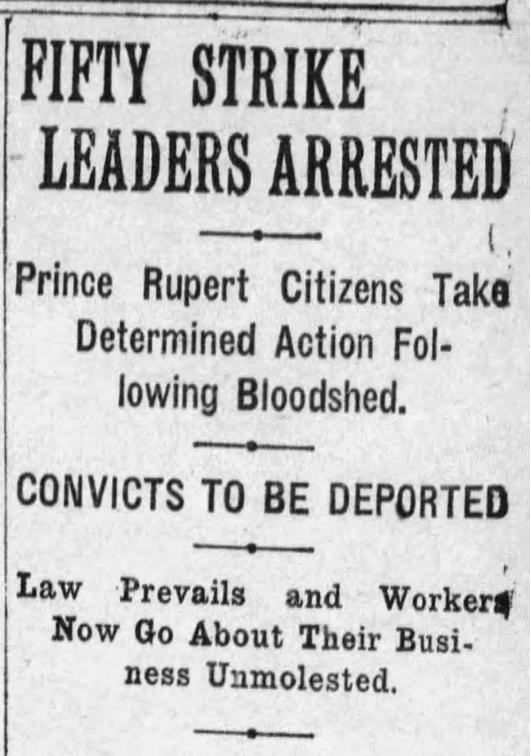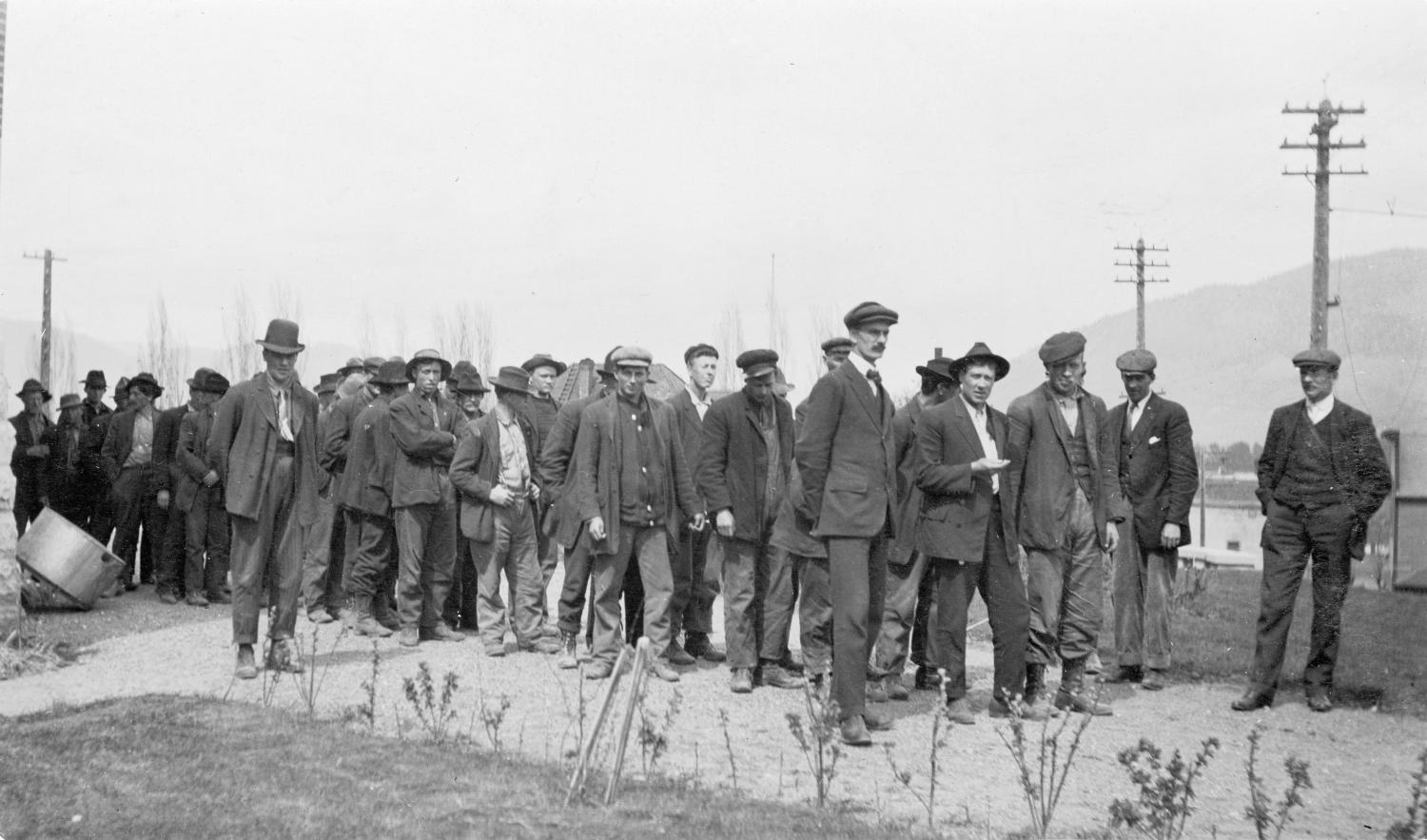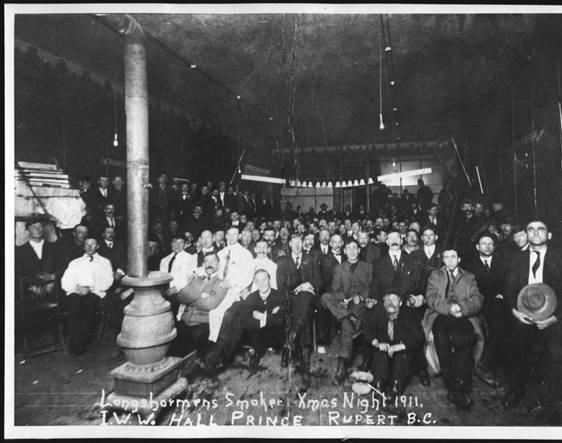Prince Rupert’s Wobblies
A riot breaks out at a protest organized by the Industrial Workers of the World Union
Date: 1911
From the docks of Vancouver to the mines of Cumberland, British Columbia has been a hub of union activity since its earliest days. And while working class resistance has provided a certain rebellious quality to the province, the spirit of class-based collective action wasn't always inclusive. Racial and ethnic exclusion was once, in fact, the norm — at least until the "Wobblies" came to town.
The Wobblies were members of the Industrial Workers of the World (IWW), a group originally founded in Chicago on June 27, 1905. "An Injury to One is an Injury to All" read their motto. Indeed, their mission of racial solidarity, direct action, and anti-capitalist leanings distinguished them from their contemporaries. Their principle of inclusivity also extended to "unskilled" workers who were often barred from the craft unions. Workers were workers, the Wobblies affirmed, regardless of race, skill, or gender.
“We must do away with racial prejudice and imaginary boundary lines,” explained the Industrial Worker, the union’s newspaper. “We must clearly see that our only enemy is the capitalist class, and the only boundary line is between exploiter and exploited.”
This progressive attitude appealed to many in British Columbia, and several locals were chartered throughout the province — five within a year of the IWW's founding alone: Phoenix, Greenwood, Victoria, Moyie, and the 'Bows and Arrows' local in Vancouver. The IWW quickly became the province's largest union.
In 1910, the IWW would make its way up north to Prince Rupert. After landing in town, British-Canadian Wobbly Robert Gosden found employment in road construction. He soon discovered work conditions to be abysmal and organized the Prince Rupert Industrial Association (PRIA) as a branch of the IWW, consisting mostly of construction workers.
The next year, the group took up the cause of private sewer and road workers who were being paid less than their municipal counterparts. Same work should mean the same pay, they argued. On April 6, PRIA took to the streets of Prince Rupert in protest. The strikers numbered several hundred and encouraged others to join as they passed. But they didn't attract much sympathy. Finally, along a stretch of road known as Kelly's Cut, a riot broke out between the protestors, police, and anti-union "scabs."
Several were injured on both sides. Strikers ended up arrested on charges of attempted murder, rioting, and assault — including Gosden, who was charged with "counselling assault" and went on to spend three months in jail. With their leaders locked up, the strike fizzled after failing to win a pay increase.
While the IWW's dominance in B.C. eventually faded, it left a legacy of inclusive class-consciousness, an alternative to the conservative unions that fell back on prejudice to fight for their members.
Sources:
1. Carlton, Sean. Working People: A History of Labour in BC, Backgrounder Pt 1 and 2. Knowledge, 2014.
2. Leier, Mark. “Portrait of a Labour Spy: The Case of Robert Raglan Gosden ...” Labour/Le Travail, Https://Www.jstor.org/Stable/25148880, Fall 1998, www.jstor.org/stable/25148880.
3. Leier, Mark. “‘We Must Do Away with Racial Prejudice and Imaginary Boundary Lines’: British Columbia Wobblies before the First World War.” Wobblies of the World: A Global History of the IWW, Pluto Press, 2017, libcom.org/history/we-must-do-away-racial-prejudice-imaginary-boundary-lines-british-columbia-wobblies-firs.
4. Mickleburgh, Rod. On the Line: a History of the British Columbia Labour Movement. Harbour Publishing, 2018.
5. "We Must Do Away with Racial Prejudice and Imaginary Boundary Lines": British Columbia Wobblies before the First World War – Mark Leier. Libcom.org, 11 Aug. 2018, libcom.org/history/we-must-do-away-racial-prejudice-imaginary-boundary-lines-british-columbia-wobblies-firs.





